November 12, 2015 – Volume 17, Issue 4
In This Issue
Flanigan’s Eco-Logic
El Nino Southern Oscillation
The Rise of Prosumers
Three Trillion Trees
Arctic Ocean Oil on Ice
Divesting Fossil Fuels and Prisons
EcoMotion Works: Energy Storage
Goldman Sachs to Invest $150 Billion in Clean Tech
Viewers to Volunteers
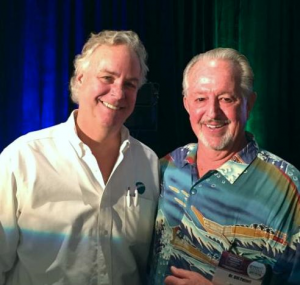
Flanigan‘s Eco-Logic: JPL’s Patzert on El Nino
Heard him on the news guaranteeing lots of rain. That’s crazy and hugely encouraging here in Southern California. Realized his credentials, and took note. According to Dr. William Patzert, the tell-tale signs of Pacific Ocean warming suggest that the El Nino now forming in the Pacific is too big to fail. According to NOAA, the strongest El Nino on record is expected to drench the southern half of United States this fall and winter.
The other day I had the pleasure of hearing William “Bill” Patzert speak at the Green California conference in Pasadena. Patzert is a rock star in SoCal. He’s JPL’s voice on this issue. He’s been all over the news predicting a hugely wet winter. In fact, he guarantees it! He’s got a great sense of humor, self-proclaimed “King of El Nino.” It was a pleasure to hear him and to meet him. He has a great style of sharing data and humor, and providing great perspective.
Bill Patzert got his B.S. in Physics & Mathematics from Purdue University; he got his Ph.D. in Oceanography from University of Hawaii. He is now a research scientist at JPL, NASA’s infamous Jet Propulsion Laboratory. There he specializes in the ocean’s role in climate variability; he is the NASA/JPL media spokesperson for ocean- and climate-related space activities. His passion is interpreting global TOPEX Poseidon/Jason sea level height data for the scientific community, “practical customers” and the general public.
Patzert’s talk was titled “Climate Whiplash,” featuring the “punishing drought we have been enduring in California for 15 years. The last four years have driven us to our knees.” Bill explained that we’ve had the driest four years on record… a total of 29.14 inches, or 7.5 inches a year. That’s half the average rainfall levels of the past 70 years (15″)… what we like to call “normal rainfall.”
But Patzert notes that there is no such thing as “normal” in climate science. That’s a dryer setting he quips! In fact, seven of the past ten years have experienced below average rainfall… buoyed up arithmetically by few wet years. What we experience is annual variability, overlaid with decadal variability. In the 13th Century, there was a 100-year drought.
“Our drought” is really not just about California. It runs from Texas, throughout the Southwest, and north up the California coast, through Oregon and Washington and the western seaboard of Canada, all the way to Alaska. The drought is huge, long and large, with temperatures getting hotter due to climate change. Patzert explains that droughts are slow, they take years to materialize and to develop. Long-term drought can be caused by 85% of normal rainfall for several years.
Snowpack provides 30% of Southern California’s drinking water. The year 2010 was a good snow year. This winter there was virtually no snowpack at all in the Sierras… 5% of normal. Thus California is getting hotter, the snowpack is shrinking and population is growing. Not a good recipe. Right? El Ninos can indeed double or even treble the snowpack.
Patzert’s monitor is Lake Mead. It measures the entire Colorado River watershed. Today the Lake “has a big round ring around the tub.” The ring is now 148 feet high. In the last 15 years, Lake Mead’s water levels have been dropping steadily. The Lake is now 30% full, its lowest level in history. Fully 30% of California’s water comes from the Colorado River… from which 7 states and 5 Indian nations take water, their allocations well above the levels now attainable.
In terms of water, Patzert explains that the American West is a roller coaster with drought and wet decades. “Droughts are normal,… the West is dry!” The situation is exacerbated by population. We’ve quadrupled our population in Southern California since the 1950s. “We have outgrown the water supply, or better put, we have outgrown the affluent lifestyle that uses too much water.”
NASA’s satellites have measured heat in the world’s oceans for two decades. The current temperature levels match the water levels just prior to the 1997 El Nino. In fact, we witness that the mass of warm water is even larger. This El Nino, by all accounts, is too big to fail. This warm mass of water will draw jet stream that take moisture from the Pacific and put it on the Southwest.
Prior El Nino years have produced over 30 inches of annual rainfall (31.01″ in 1997 and 31.28″ in 1982). Will another 30+ inches be punishing? Do we have a crisis on our hands? Patzert suggests that the media is playing this up. Will El Nino result in massive flooding, loss of property and life? “Not necessarily,” Patzert explained. Most El Ninos produce lots of water without catastrophic flooding.
What Patzert calls “Los Ninos” tend to be steady, “none too splendid.” Contrast that with what happened in a non-El Nino year, 1938. Then, more than ten inches in 24 hours created “punishing” results in the region, catastrophic flooding throughout Los Angeles and Orange Counties. What is now the City of Irvine was under six feet of water.
After the 1938 flooding, the Los Angeles River was no longer a river. It’s a flood control channel. “It’s magnificent,” Patzert commented, “51 miles of concrete channel backed by 2,600 miles of storm sewers.” He explained that we’ve put billions into flood control in Southern California for 70-80 years. “We’re vaccinated against large-scale, regional flooding.” According to Patzert, the problems are local. He cited the homeless as those that really suffer. Gone also will be A-grade report cards from Heal the Bay measuring water quality along our beaches. Big rains will wash all sorts of debris to the mouth of the Los Angeles River and our beaches.
So will the drought be over if we have an El Nino year? No, Patzert explains that just as this drought has been 15 years in the making, it will take some 10 years of “normal” precipitation to return to normal conditions. In the meantime, we need to continue on the conservation path: “We’ve learned to conserve water, at our schools in our homes, and yards. That’s not tapering off; that’s our new lifestyle.”

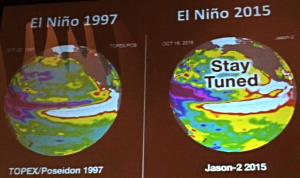 El Nino is an anomalous, yet periodic, warming of the central and eastern equatorial Pacific Ocean. Every 2 – 7 years this patch of tropical ocean warms for 6 – 18 months with far-reaching consequences. (The subsequent cooling phase is known as La Nina.) This warming of equatorial Pacific water influences the atmospheric pattern from the western Pacific Ocean including Australia and Indonesia to North and South America, the Atlantic Ocean, and even parts of Europe and Africa. A British publication recently claimed that scientists are now certain that El Nino “will have catastrophic knock-on effects around the world including England.”
El Nino is an anomalous, yet periodic, warming of the central and eastern equatorial Pacific Ocean. Every 2 – 7 years this patch of tropical ocean warms for 6 – 18 months with far-reaching consequences. (The subsequent cooling phase is known as La Nina.) This warming of equatorial Pacific water influences the atmospheric pattern from the western Pacific Ocean including Australia and Indonesia to North and South America, the Atlantic Ocean, and even parts of Europe and Africa. A British publication recently claimed that scientists are now certain that El Nino “will have catastrophic knock-on effects around the world including England.”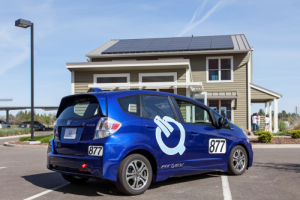
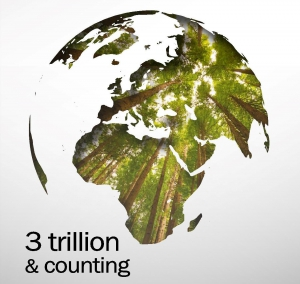

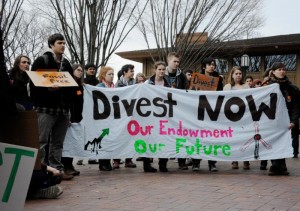 Eight months after becoming the first capital city to divest from coal, Oslo has announced it intends to divest its pension fund from all fossil fuels. According to Fossil Free Europe, the City of Oslo announced that it intends to divest its $9 billion pension fund from coal, oil, and gas companies.
Eight months after becoming the first capital city to divest from coal, Oslo has announced it intends to divest its pension fund from all fossil fuels. According to Fossil Free Europe, the City of Oslo announced that it intends to divest its $9 billion pension fund from coal, oil, and gas companies.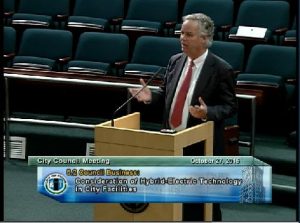 This past week, and at the request of City Councilmember and former Mayor Christina Shea, EcoMotion’s President Ted Flanigan briefed the Irvine City Council on the City of Irvine’s opportunities for Advanced Energy Storage. The 15-minute briefing featured a slide show depicting advances in storage, the lithium revolution, and strategic options for energy storage deployment.
This past week, and at the request of City Councilmember and former Mayor Christina Shea, EcoMotion’s President Ted Flanigan briefed the Irvine City Council on the City of Irvine’s opportunities for Advanced Energy Storage. The 15-minute briefing featured a slide show depicting advances in storage, the lithium revolution, and strategic options for energy storage deployment.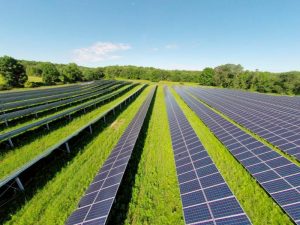 Fortune magazine reports that financial giant Goldman Sachs has announced that it plans to invest $150 billion in clean energy projects and technology like solar and wind farms, energy efficiency upgrades for buildings, and power grid infrastructure. The bank previously had a target to invest $40 billion in clean energy technologies by 2012, and will now almost quadruple that amount by 2025.
Fortune magazine reports that financial giant Goldman Sachs has announced that it plans to invest $150 billion in clean energy projects and technology like solar and wind farms, energy efficiency upgrades for buildings, and power grid infrastructure. The bank previously had a target to invest $40 billion in clean energy technologies by 2012, and will now almost quadruple that amount by 2025.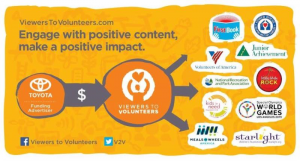 There’s a new app out there for those of you looking to make a change in the world – and it allows you to do so while you read the news or watch a video. Viewers to Volunteers, the brainchild of CBS EcoMedia Inc, is an inventive platform that allows its users to contribute money towards non-profits without lifting a finger from their phone, and without spending a dime. “V2V is a unique new program that, at its heart, allows every viewer to be a philanthropist, but without spending their own money,” said Paul Polizzotto, longtime friend of Ted Flanigan and EcoMotion.
There’s a new app out there for those of you looking to make a change in the world – and it allows you to do so while you read the news or watch a video. Viewers to Volunteers, the brainchild of CBS EcoMedia Inc, is an inventive platform that allows its users to contribute money towards non-profits without lifting a finger from their phone, and without spending a dime. “V2V is a unique new program that, at its heart, allows every viewer to be a philanthropist, but without spending their own money,” said Paul Polizzotto, longtime friend of Ted Flanigan and EcoMotion.